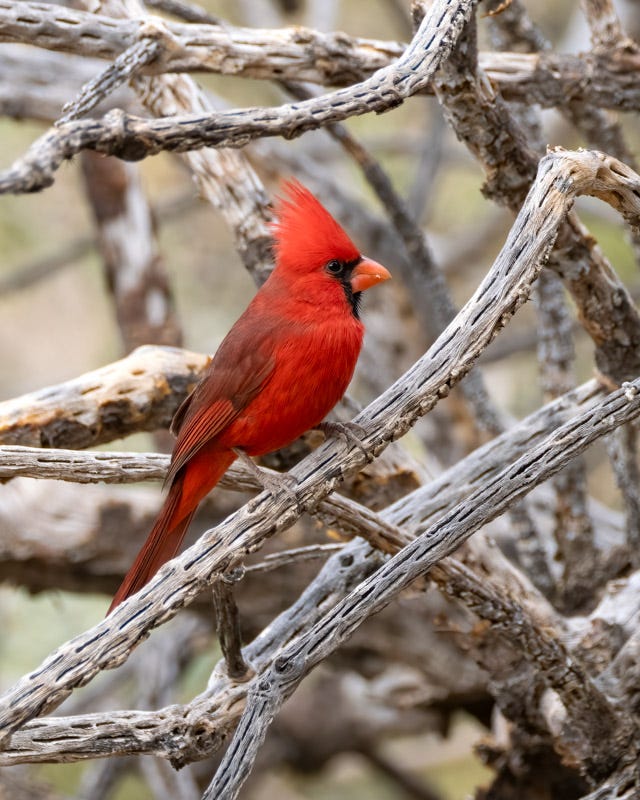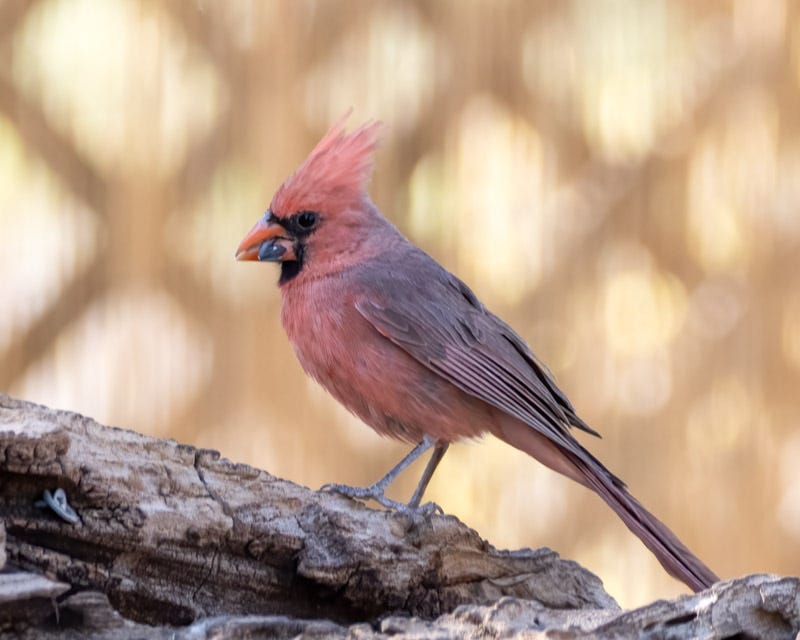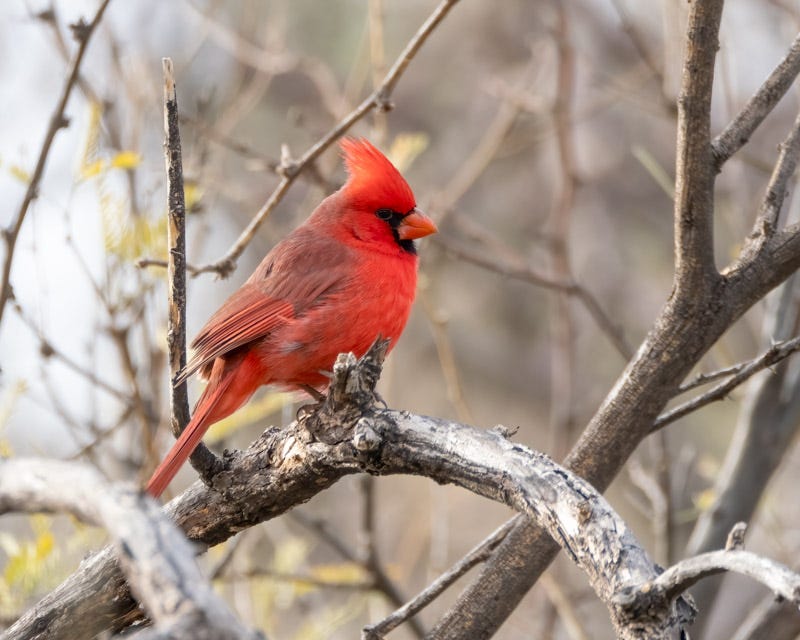A Most Unusual Cardinal
I've never seen one like this!
The male Northern Cardinal is probably the most recognizable bird in the US. It is familiar even to people who are not birders. When it appears, it is very conspicuous with that bright shade of red. Cardinals are so popular that they are the "state birds" of seven different states and many professional and amateur sports teams use a “Cardinal'“ as their mascot. The photo below is of a Cardinal that was in my backyard in January. That's what we all recognize what a Cardinal looks like.
Cardinals were named by Carl Linnaeur in 1758 who referred to the bright red robes and caps of Roman Catholic cardinals. With the recent death of Pope Francis, cardinals now have the responsibility of choosing a new Pope and we'll be seeing those red robes in the news for a while.
The scientific name for the bird we know is "Cardinalis cardinalis" to emphasize that link and the "Northern" part of the Cardinal's common name is to distinguish it from other Cardinal species whose range is further south. So Northern Cardinals are bright red- we all know that. Imagine my surprise when I saw this pink Cardinal at a feeder near Portal, Arizona! It definitely was not red!
I had never seen a Cardinal with plumage so light. Another common bright red bird species is the House Finch. Males will have bright red plumage as the image below shows. This is a photo I shared with you recently.
Male House Finches, like Cardinals, do not have the ability to produce red feathers on their own. With the exception of a few parrots, most birds acquire their warm colors from molecules called carotenoids in the food they eat. Carotenoids produce a yellow pigment and birds like Cardinals and House Finches have the ability to convert those yellow carotenoids into red pigments, which are then deposited into their feathers. House Finches who eat fewer carotenoids can be found. They'll have orange rather than red feathers or may even have a yellowish feather tint.
However, Cardinals don't seem to appear in different color variations. Male Cardinals are bright red, like this one I saw near Catalina State Park in January. So is there another possible reason for that pink Cardinal's unusual color?
It could be that this Cardinal's plumage color is due to a trait called leucism. Leucism is a genetic condition that affects production of the pigment (or melanin) that gives color to feathers (or skin or fur in other animals). In the case of this Cardinal, the melanin responsible for dark colors in his plumage is diluted, resulting in paler feathers which appear pink.
No matter what the reason, this Cardinal is certainly unique. He looked and acted very healthy, but he is a special bird.
I've heard the word "leucism" pronounced two different ways. Both "lew-si-zem" and "lew-ki-zem" are commonly used, with the accent on the second syllable.
April is over and with that so is the Tucson Bird Alliance Birdathon. Thank you to our recent donors including Jenise P., Elaine G., Richard B., Carol E. With their donations and pledges from Marcia G., Linda P., and Mort W., our team will have raised almost $4600 in support of TBA’s local programming and education efforts. If you would like to see our donation page once more, you can do so here.









He is a beautiful boy, I think he is demonstrating that everyone looks great in pink!
Congrats on the fund raising- impressive
We love our cardinals and their song!